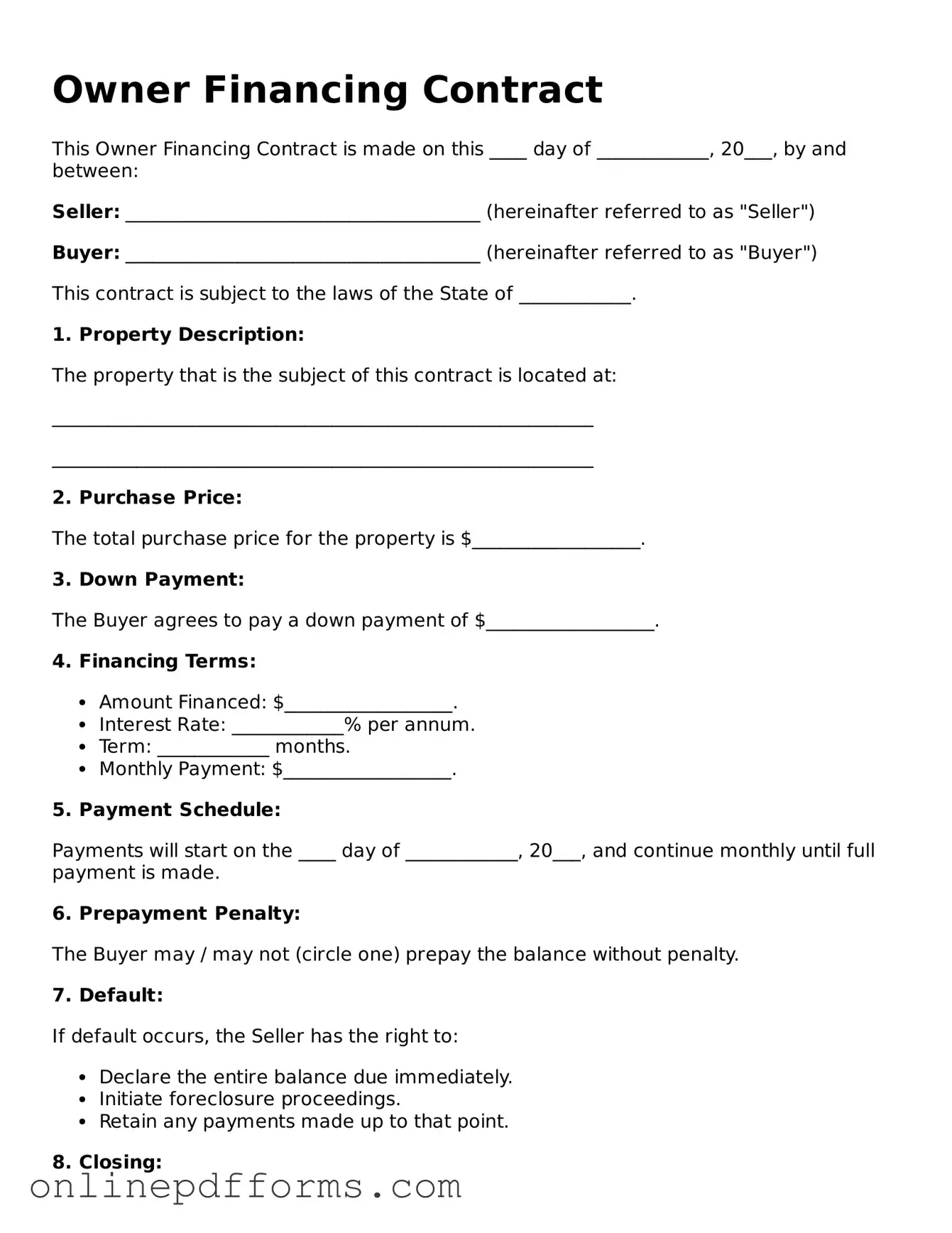The Owner Financing Contract form shares similarities with a Purchase Agreement. Both documents outline the terms of a property sale, including the purchase price and conditions of the sale. A Purchase Agreement typically details the buyer's obligations, such as securing financing and conducting inspections. In contrast, the Owner Financing Contract emphasizes the seller's role in providing financing directly to the buyer, thus altering the traditional financing landscape.
For anyone navigating real estate transactions, understanding the nuances of a comprehensive Real Estate Purchase Agreement process is crucial. This document solidifies the relationship between a buyer and seller, ensuring clear terms and minimizing potential disputes during the transaction. To enhance your knowledge, you can explore the essentials of a Real Estate Purchase Agreement that outline what you need to consider when drafting this important contract.
Another document akin to the Owner Financing Contract is the Lease Purchase Agreement. This agreement combines elements of leasing and purchasing. A Lease Purchase Agreement allows a tenant to rent a property with the option to buy it later. Like the Owner Financing Contract, it provides a pathway for buyers who may not qualify for traditional loans. However, the Lease Purchase Agreement usually involves an initial rental period, which is not a feature of standard owner financing.
The Seller Financing Addendum also resembles the Owner Financing Contract. This addendum is often attached to a standard Purchase Agreement to outline specific financing terms provided by the seller. Both documents specify interest rates, repayment schedules, and default consequences. The key difference lies in the fact that the Seller Financing Addendum supplements an existing contract, while the Owner Financing Contract serves as a standalone agreement.
Similar to the Owner Financing Contract is the Land Contract, also known as a Contract for Deed. In this arrangement, the buyer makes payments directly to the seller while occupying the property. Ownership is transferred only after the buyer fulfills the payment terms. This document emphasizes the seller's security interest in the property until full payment is made, mirroring the owner financing structure where the seller retains a financial stake.
The Promissory Note is another document that aligns with the Owner Financing Contract. A Promissory Note is a written promise to pay a specified amount of money at a certain time. In owner financing, this note serves as a formal acknowledgment of the buyer's obligation to repay the seller. While the Owner Financing Contract outlines the broader terms of the sale, the Promissory Note focuses specifically on the repayment details.
The Mortgage Agreement is also similar, although it typically involves a third-party lender. In a Mortgage Agreement, the borrower secures a loan to purchase a property, using the property as collateral. Like the Owner Financing Contract, it includes terms regarding payment schedules and interest rates. However, unlike owner financing, a Mortgage Agreement involves a financial institution, which may introduce additional complexities such as credit checks and underwriting processes.
Lastly, the Real Estate Option Agreement bears resemblance to the Owner Financing Contract. This document grants a buyer the right, but not the obligation, to purchase a property within a specified timeframe. It often requires the buyer to pay an option fee. While the Owner Financing Contract obligates the buyer to purchase and finance the property, the Real Estate Option Agreement allows for more flexibility, giving buyers a chance to evaluate the property before committing to a purchase.
